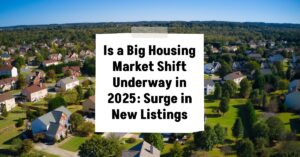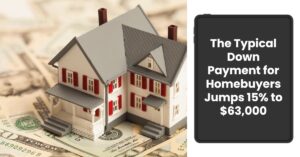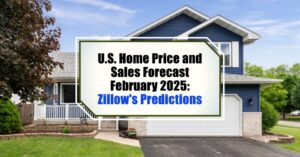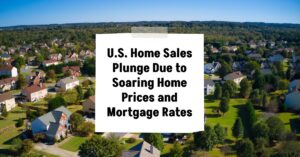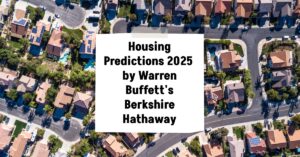Buying a home is a significant milestone for many individuals and families, representing a blend of financial investment and personal achievement. One of the most important factors in the home-buying process is the down payment. In this article, we will explore the average down payment on a house in Florida, the factors that influence it, and tips for prospective buyers, including assistance programs and practical saving strategies. Our goal is to equip you with the information you need to navigate the real estate landscape in Florida efficiently.
What is a Down Payment?
A down payment is an initial payment made when purchasing a home, typically expressed as a percentage of the home's purchase price. For example, if you're buying a house for $300,000 and you make a $30,000 down payment, you're putting down 10%. The remaining amount is financed through a mortgage, which is a loan specifically for real estate.
Down payments are crucial for several reasons:
- Equity: The down payment builds equity in your home from day one. Higher equity means you own more of your home outright, which can be beneficial in the event of a sale.
- Interest Rates: A larger down payment can result in lower mortgage rates. Lenders often view buyers with substantial down payments as less risky.
- Avoiding Private Mortgage Insurance (PMI): A down payment of 20% or more typically allows buyers to avoid PMI, which is an additional monthly fee that protects the lender if you default on the loan.
The Average Down Payment on a House in Florida
As of 2025, the average down payment on a house in Florida hovers around 10% to 20% of the home's purchase price. This range can fluctuate based on various factors, including the housing market's status and individual buyer situations.
Comparison to National Averages
In comparison, the national average down payment is approximately 12%. This indicates that down payments in Florida are generally in line with, or slightly below, national figures.
Table: Average Down Payment Statistics in Florida vs. National Averages
| Location | Average Home Price | Average Down Payment | % of Home Price |
|---|---|---|---|
| Florida | $350,000 | $35,000 | 10% |
| National Average | $360,000 | $43,200 | 12% |
Factors influencing the average down payment in Florida include:
- Housing Market Trends: Florida's real estate market has experienced fluctuations, with prices rising significantly in the past few years. Buyers may struggle to save the needed down payment.
- Regional Variations: Areas like Miami or Orlando may have higher average down payments due to increased demand and higher home prices compared to rural areas.
Variations in Down Payment Requirements
First-Time Homebuyers
First-time homebuyers often have different requirements. On average, first-time buyers in Florida usually make a down payment of around 7%, with many utilizing down payment assistance programs to help them secure their new home.
Programs like the Florida Housing First Time Homebuyer Program can provide financial assistance, sometimes covering part of the down payment.
Conventional Loans vs. FHA Loans
When exploring down payment options, it's essential to consider the differences between loan types.
- Conventional Loans: These often require a minimum down payment of 5% to 20%, depending on the borrower's credit score.
- FHA Loans: Designed for low to moderate-income borrowers, FHA loans allow down payments as low as 3.5%. This option can be appealing for many first-time buyers.
Comparison Table: Down Payment Requirements
| Loan Type | Minimum Down Payment | Pros | Cons |
|---|---|---|---|
| Conventional | 5% – 20% | Flexible terms, avoid PMI at 20% | Higher credit score needed |
| FHA | 3.5% | Lower down payment, easier qualifying | PMI required regardless of down payment |
Cash Offers
Cash offers can significantly reduce or eliminate the need for a down payment altogether. Cash buyers do not rely on financing, thus not subjecting themselves to the same requirements as traditional buyers. This can create a competitive edge in a tight housing market, especially in sought-after areas.
Factors That Affect the Average Down Payment on a House
Location and Neighborhood Trends
The price of homes can vary dramatically across Florida. For example:
- Miami: Known for its luxury real estate market, average home prices can exceed $500,000, leading to a down payment in the range of $100,000 (20%).
- Orlando: A more balanced market, where average home prices are about $350,000, resulting in a down payment of $35,000 (10%).
- Tampa: Offering competitive prices at about $320,000 on average, where the down payment would similarly fall into the range of $30,000 (10%).
Property Types
Different property types can also affect down payment requirements. For instance:
- Condos: Average prices may be lower, along with down payment requirements. Many condos sell for under $300,000, translating to lower initial costs.
- Single-Family Homes: Typically require more significant down payments, especially in suburban areas.
- Luxury Homes: Homes priced over $1 million will generally require more substantial down payments, often 20% or more.
Personal Financial Situation
Your financial health significantly impacts your down payment decision. Factors to consider include:
- Credit Score: Higher credit scores typically result in better loan terms and lower down payments.
- Income Level: A higher income may make it easier to save for a larger down payment.
- Savings: The amount saved and the buyer’s financial habits greatly influence down payment capability.
Down Payment Assistance Programs in Florida
Florida offers several programs aiming to assist potential homebuyers. These may help lower the burden of down payments.
- Florida Housing's First Time Homebuyer Program: Provides substantial assistance, sometimes up to $15,000 in down payment assistance for qualified buyers.
- Local Government Programs: Many counties and cities have specific programs that offer grants and loans for down payments and closing costs.
How to Apply for Assistance
To qualify for these programs:
- Check Eligibility: Look into requirements such as income limits and first-time buyer status.
- Gather Documentation: Prepare necessary financial documents, proof of residency, and any other required information.
- Apply: Complete the application process either online or through local agencies.
Tips for Saving for a Down Payment in Florida
Saving for a down payment can feel daunting, but there are practical strategies to ease the process.
- Create a Budget: Track your expenses and create a budget that allows you to allocate a specific amount each month to your down payment fund.
- Set Savings Goals: Determine how much you need and set achievable milestones to keep you motivated.
- Utilize High-Yield Savings Accounts: Consider putting your savings in a high-yield savings account to earn more interest over time.
The Importance of Financial Planning
Engaging with a financial advisor can further enhance your saving strategy, providing tailored advice based on your financial situation and goals.
Frequently Asked Questions (FAQs)
What is the minimum down payment required to buy a house in Florida?
The minimum down payment can be as low as 3.5% for FHA loans or 5% for conventional loans.
Can I put less than 20% down on a house in Florida?
Yes, many options are available that allow down payments of less than 20%, particularly for first-time homebuyers.
Are there specific grants or programs for down payments in Florida?
Yes, Florida has numerous programs like the Florida Housing First Time Homebuyer Program that provide financial assistance with down payments.
How do down payments impact mortgage insurance?
A down payment of less than 20% typically requires private mortgage insurance (PMI), which adds to monthly mortgage payments.
- Florida Housing Market Predictions: Will it Crash?
- Florida Housing Market Predictions for Next 5 Years
- Florida Housing Market: Coastal Crisis vs Inland Opportunity
- Will Housing Market Crash in Florida: Supply Soars to 7-Year High
- Florida Housing Market Crash: 3 Cities on High Risk of Decline
- Florida Housing Market Predictions for Next 2 Years
- 10 Best Places to Live in Florida



